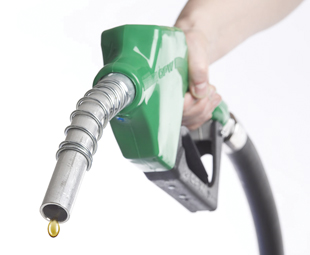South Africa’s sub-standard fuel

Since 2008 all new South African vehicles have had to comply with Euro 2 emission specifications. In the European Union (EU), all diesel-powered vehicles adhere to stringent Euro 5 standards. Tiny Mauritius imports all its 50 ppm diesel fuel. Yet this quality of fuel is still not readily available throughout South Africa. We are still at Euro 2 level, a 16-year-old standard. Why have our four refineries not been upgraded? BRUCE CAROLIN reports.
First some background. Euro emission standards are the limits set by the EU on exhaust emissions for EU members. Effective as of 2006, two grades of diesel were legislated by the (then) South African Department of Minerals and Energy (DME) with maximum sulphur levels of 500 parts per million (ppm) and 50 ppm respectively. While all diesel vehicles benefit from the use of low-sulphur diesel, the 50 ppm grade was introduced to accommodate the increasing number of new technology diesel vehicles entering the South African market. These vehicles are designed to operate on current European diesel fuel that has a maximum sulphur level of 50 ppm and to allow the introduction of new technology particle filter equipped diesel vehicles that can only use diesel fuel with a sulphur level not exceeding 50 ppm.
The 50 ppm low-sulphur grade is now being marketed by an increasing number of oil companies in South Africa – alongside the standard 500 ppm grade. However, it remains a concern that, despite government legislation, many filling stations still do not display legally prescribed labelling to indicate the maximum sulphur level of the diesel fuel on sale.
“Low-sulphur diesel fuel is available at selected fuel stations – this technology is not widely used in heavy vehicles in South Africa due to the fact that the fuel is not readily available at all outlets across the country and it is not available across our borders. Sasol is the only refiner of Euro 5 approved fuel – the other oil majors import this fuel in limited volumes,” says Christopher Crookes, area training manager for Scania South Africa.
NO RELIABLE SUPPLY CHAIN
South Africa has access to Euro 4 and 5 diesel, however, the fuel station network does not seem to have a reliable supply chain that can maintain constant demand. It continues to constrain automotive companies being able to offer highly fuel-efficient, diesel-engined vehicles into the domestic market.
Euro 5 fuel has a very low sulphur content (Euro 5 specification is below 10 ppm), which improves the combustion process in the engine resulting in lower CO2 and NOx exhaust emissions.
Business Day recently commented on the situation, reporting that Euro 5 standards, which came into force in Europe in 2008, require that diesel contains less than 10 ppm of particulate matter. “In SA, fuel retailers like to pretend their 50 ppm diesel is way advanced, and that the ‘standard’ 500 ppm diesel is the normal grade acceptable to the market,” the newspaper noted. It is not!
Crookes explains that some truck/bus manufacturers use Euro 3 engines and apply an exhaust after treatment process (UREA) to make the vehicle Euro 5 compliant.
“Again the chemicals used in the after treatment process are not readily available at fuel outlets. However, on an international front Scania uses much higher fuel injection pressures which incorporates Exhaust Gas Recirculation to achieve Euro 5 and does not need addition chemicals,” explains Crookes.
What can happen to your vehicle? Extracts from the fourth edition of the worldwide fuel charter explain how sulphur levels in fuel can affect your vehicles. “Sulphur occurs naturally in crude oil. If the sulphur is not removed during the refining process, it will contaminate vehicle fuel. Sulphur can have a significant effect on engine life. As levels increase, relative engine life decreases. Diesel fuel sulphur also contributes significantly to fine particulate matter (PM) emissions, through the formation of sulphates in the exhaust stream which are then emitted into the atmosphere,” it states
“Sulphur can lead to corrosion and wear of engine systems. Furthermore the efficiency of some exhaust after-treatment systems is reduced as fuel sulphur content increases, while others are rendered permanently ineffective through sulphur poisoning,” says Crookes.
Vehicles fitted with diesel particulate filters (DPFs), and which use high-sulphur diesel, tend to block quicker. They need to regenerate more often which reduces their lifespan. (The regeneration process is when the injectors inject into the exhaust stoke of the motor – the fuel burns in the DPF and the carbon deposits are flashed off.)
Crookes says that engines below Euro 5 specifications use diesel fuel with high sulphur content (500 ppm) and that they emit high levels of nitric oxide (NOx) exhaust gases. This is detrimental to the environment and human health.
“Using local fuel in a Euro 5 engine will have a harmful effect on the high precision fuel-injection system that will result in premature failure of these components and result in repair costs. This, in turn, can cause damage to other engine components due to fuel dilution of the lubricating oil. Local fuel will also have an adverse effect on the combustion process resulting in higher exhaust emission levels and an increase in fuel consumption,” elaborates Crookes.
Environmental laws in SA only comply to Euro 3 as we are unable to comply with Euro 5 emission regulations. Euro 5 engines not only run cleaner, but produce more power and torque along with much improved fuel consumption. Using the incorrect fuel grade is guaranteed to result in premature engine and fuel system failure… and, of course, repair and downtime considerations.
Why haven’t we changed? In 2009 then executive director of Sasol, Dr Benny Mokaba, told a press conference that fuel refiners in South Africa would need to spend about R40 billion to upgrade their plants to meet Euro 4 standards.
He further stated that reaching Euro 5 standards would be even more expensive, and that South African refiners could not afford these costs. He also stated that this expense was not in the national interest because there were more pressing things to address. Total S.A. technical manager Thomas Surman says the issue is a bit more complex as the fuel stations need additional tanks and pumps to cater for Euro 5 diesel. Current fuel stations do not have facilities to cater for another product.
THE SOLUTION
The National Automobile Association (Naamsa) continues to advocate that government should legislate and incentivise the introduction of Euro 4 enabling “green” fuel in South Africa. “This would provide a quantum leap in the reduction of CO2 emissions of new vehicles sold because they could be specified from the manufacturer with the new generation engines. Specifically, correct fuel quality could reduce new vehicle emissions by up to 20%. Moreover, improved fuel quality contains fewer harmful pollutants, notably benzene and sulphur, which would contribute to improved air quality regardless of the age or type of the vehicle.”
In the final analysis, the introduction of CO2 taxes on new vehicles and the introduction of Euro 4 and Euro 5 enabling fuel in South Africa should go hand in hand.
Naamsa advises that where no sulphur level is indicated on the fuel pump, motorists should assume that the diesel is of the standard 500 ppm quality and not the low sulphur 50 ppm “clean” diesel.
Naamsa also advises drivers of diesel vehicles to be aware of vehicle manufacturers’ fuel quality recommendations when refuelling, specifically relating to maximum diesel sulphur level.
Considering all the evidence, it seems transport operators need to be more careful than ever. While many fuel companies claim that new additives improve engine performance, the killer of new engines remains high-sulphur levels. The use of low-sulphur fuels may just be the key to longevity of your vehicle’s engine.
Published by
Focus on Transport
focusmagsa




